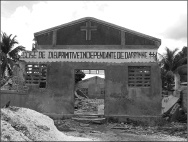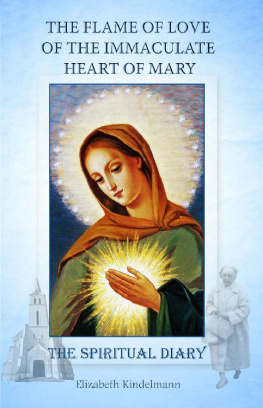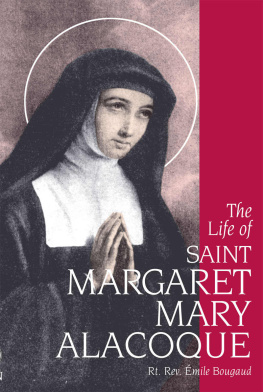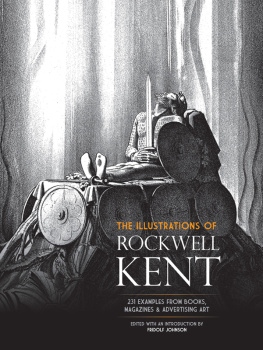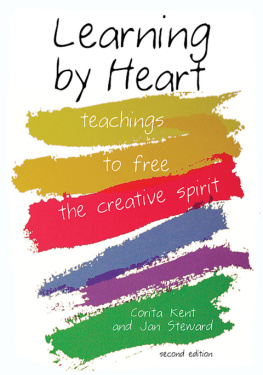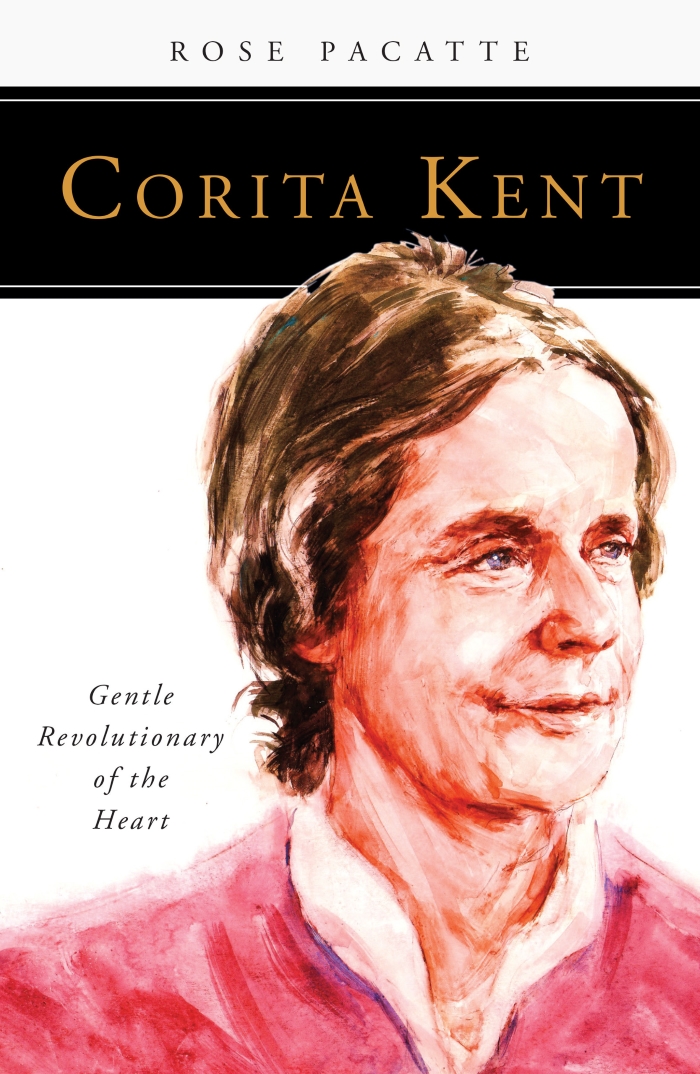Cover design by Stefan Killen Design. Cover illustration by Philip Bannister.
2017 by Order of Saint Benedict, Collegeville, Minnesota. All rights reserved. No part of this book may be reproduced in any form, by print, microfilm, microfiche, mechanical recording, photocopying, translation, or by any other means, known or yet unknown, for any purpose except brief quotations in reviews, without the previous written permission of Liturgical Press, Saint Johns Abbey, PO Box 7500, Collegeville, Minnesota 56321-7500. Printed in the United States of America.
Library of Congress Control Number: 2016962949
ISBN 978-0-8146-4662-5
978-0-8146-4686-1 (ebook)
This book is dedicated to the Immaculate Heart Community today
and to all women religious past, present, and future
who live love and mercy in their lives
even when no one is looking.
Acknowledgments
There are so many people who contribute to a book that it is impossible to thank everyone but I would like to try. Special thanks to the Corita Art Center in Los Angeles, especially Ray Smith and Keri Marken and staff for their kind assistance and to Anna Maria Prieto, IHM, archivist for the Immaculate Heart Community. I am grateful to Nan Deane Cano, IHM, for permission to quote from her book and her availability to sit for an interview; to Lenore Dowling, IHM, Hermine Lees, IHM, and Helen Kelley, IHM, for their willingness to talk to me about Corita, as well as to Sasha Carrera and Mickey Myers for their assistance through the writing and research process. I am grateful to the helpful staff at the Schlesinger Library at the Radcliffe Institute at Harvard University for access to the papers of Corita Kent.
Thanks go out to Ian Berry and Michael Duncan and Skidmore Colleges Frances Young Tang Teaching Museum and Art Gallery for permission to quote from their book on Corita, to author April Dammann for talking with me about aspects of Coritas life that I continue to wonder about, and to Mother Mary Anne Noll, OSB, for sharing her memories. To Joan Doyle goes a special thank-you.
I am most grateful to my Daughters of St. Paul community in Los Angeles that always supports me. I could never have completed this book without my sister Libby Weatherfield and her husband, Tracy; their dogs Petunia and Buster, rescue donkeys Buttercup, Daisy, and Harold; the chickens and random wild turkeys; and the roving nighttime skunks and coyotes for sharing their home in the foothills of the Sierra Nevada so I could have a quiet place to write as well as some interesting antics, smells, and sound effects. I think Corita would be pleased.
List of Names
Because many of the sisters named in the book had names given them in religious life and who either returned to use of their baptismal names or left the Sisters of the Immaculate Heart of Mary and married, this list may be helpful.
Sister Mary Corita, Corita, Frances Kent
Sister Mary William, Helen Kelley
Mother Mary Humiliata, Anita M. Caspary
Sister Mary Lenore, Lenore Dowling
Sister Marie Fleurette, Liz Bugenthal
Introduction
The Sisters of the Immaculate Heart of Mary (IHM) founded Immaculate Heart College in 1916 in Los Angeles; by 1947 it was becoming known as having one of the finest art departments in the country. The Tidings (now Angelus News ) , the newspaper of the Archdiocese of Los Angeles, reported in an October 10 article that year that additional faculty and curriculum offerings had been addedfive new studios for painting, general design, costume design, weaving, and ceramics had been combined to form an art department of which the small college was rightly proud. The college now had three art majors: painting and commercial art, interior decoration and costume design, and teaching of secondary school art.
But little did the Immaculate Heart of Mary sisters know that one of their own, Sr. Mary Corita Kent, a name that perhaps meant little heart, would go on to become one of their most revered teachers and a world famous silkscreen (serigraph) artist when she was assigned in 1947 to assist Sr. Magdalen Mary Martin in the art department. In 1951 Corita had completed a master of arts in art history at the University of Southern California in Los Angeles and had begun to experiment with serigraphs. When she started winning awards in 1952 for her modern Byzantine-influenced serigraph the lord is with thee, even Corita didnt know that her art on the West Coast would morph and emerge in the sixties as part of the pop art revolution that Andy Warhol was leading on the East Coast.
Sister Mary Corita Kent would eventually leave her religious community, exhausted and overcome by years of work. It was during the upheaval of the postVatican Council II world (and the IHM Community in particular), a world of war and social unrest. She would also quietly walk away from her Catholic faith. At age fifty and after thirty-two years of religious life, Corita began the next stage of her life.
Why, you may ask, would a Catholic publisher discern and decide to include a biography of Corita Kent in its People of God series, biographies that showcase Catholics, living and deceased, some even beatified and canonized, who led and are leading exemplary Catholic lives?
And why would I, who entered the religious congregation of the Daughters of St. Paul the summer before Corita Kent left hers, want to write it?
The overarching reason for this account of the life of Corita, as she became knownjettisoning even her last name when Corita became a brandis that we have celebrated the Year of Mercy. Every family and every person in the pew has a family member or knows someone who has walked away from his or her Catholic faith and loves that person still as God does. Each person is on a journey toward God, even if the journey is unacknowledged or unwanted. And each person has something to teach us about being better human beings if we are paying attention.
And then, sometimes people just get tired.
In addition there is the incredible contribution that Corita Kent made to the world of art, indeed to fine art and to culture, that remains with us today. Her ways of seeing and making us look and pay attention to the people and needs of the world and how we are connected are the stuff of legend and an ongoing education of the spirit. The Someday Is Now: The Art of Corita Kent exhibition that was originally organized by the Frances Young Tang Museum and Gallery at Skidmore College, New York, and shown at the Pasadena Museum of California Art in 2015, was for me an immersion into all things Corita.
On a personal level, as I learned more about Corita from articles, correspondence, books, films, her art, her own words, and interviews with people who knew her or know a lot about her, I discovered that she suffered from insomnia for decades, something that as a person with multiple sclerosis, I understand. She admits that it had all become too much as that summer of 1968 approached. I think Sr. M. Corita Kent was exhausted in body and weary in soul when she asked for a sabbatical from which she never returned. Her story evokes my empathy.
It was a privilege to research her papers at the Schlesinger Library on the History of Women in America at the Radcliffe Institute at Harvard University, meticulously ordered by Mickey Myers. While the papers were all about her, they reveal that she had a minimalist sense of self. There are loving letters from her brother Mark, written in his own calligraphic style, thanking her for monetary support using coded language; letters from her friend and artistic executor of her estate, Mickey Myers, who complains to Corita that she doesnt get Flannery OConnor from the book of her letters that Corita had suggested she read; and almost nothing from her beloved sister Mary Catherine or other siblings.





